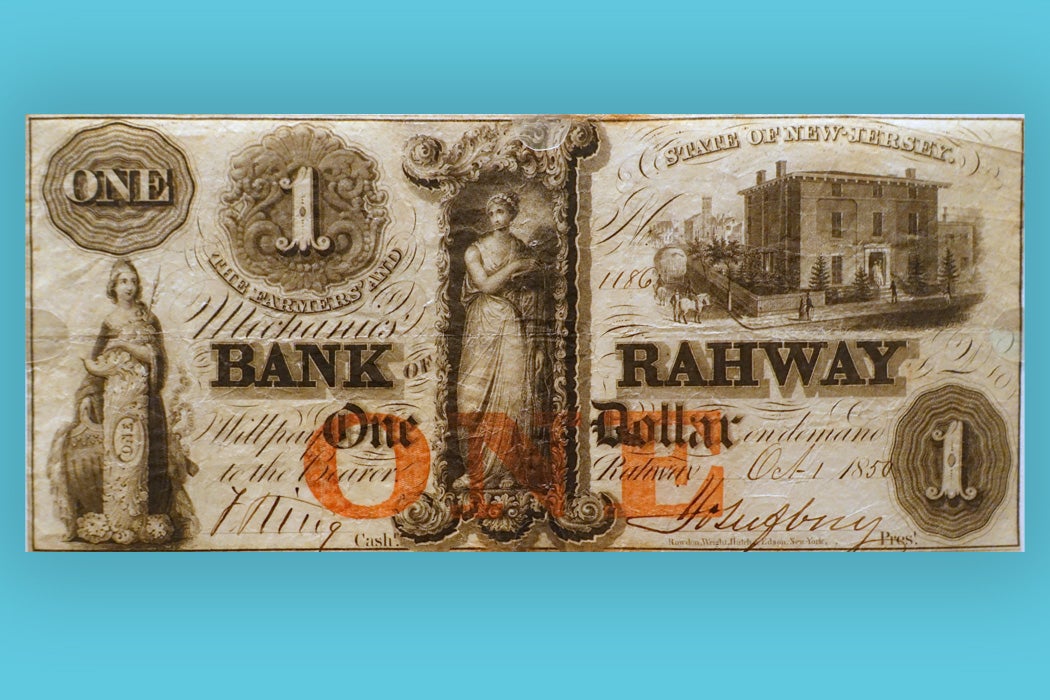The rise and fall in the price of Bitcoin based on Elon Musk’s tweets is a reminder that most people view the private digital currency more as an investment than usable money. But there was a time in the United States when private money was a very viable option. Before the Civil War and the printing of the first greenbacks, historian Stephen Mihm writes, hundreds of local banks issued “thousands of different kinds of currency in a bewildering variety of denominations and designs,” which became the “de facto currency of the country.”
Before the American Revolution, economic historian Howard Bodenhorn explains, Britain didn’t send enough small-denomination copper and silver coins to the colonies to meet local needs. So colonial loan offices and land banks issued bills of credit for under 20 shillings. Minting of coins remained limited well into the nineteenth century, and local commercial banks picked up the slack. They took in gold and gave out bank notes in return, including some in very small denominations.
Bodenhorn writes that people used this paper currency in everyday transactions. But it couldn’t circulate too far from the issuing bank, where the notes could be redeemed. Merchants located at a distance often only accepted them at a discount or wouldn’t take them at all. To make the notes more useful, some country banks made deals to get their counterparts in nearby cities to redeem them.
Buyers and sellers had to be careful about the bills they used, Bodenhorn writes. If a bank went belly-up, its currency would become unredeemable and worthless. So merchants and consumers often used brokers, who monitored the quality of banknotes.
Another danger was counterfeiting. Much as the federal government does today, banks went to a great deal of effort to make their bills hard to copy, using engraving, watermarking, and distinctive images.
Mihm writes that banks’ demand for distinctive note designs drove the creation of a new printing process called siderography, which allowed printers to mix and match design elements. A border, a picture, and the phrase “promise to pay” would each have its own steel plate. Designing a new note was just a matter of combining a number of such elements in a distinctive way.
Weekly Newsletter
Among the most common images banks chose were factories and workers (in the North) and enslaved farm workers (in the South). Some banks also came up with more unusual imagery, like scenes from classical mythology.
After the Civil War, Congress effectively ended the printing of bank notes in the North and, more gradually, the South. The government-created paper money that followed made up for its dull uniformity by being far simpler to use than the bank notes of the nineteenth century—or, as it would turn out, the cryptocurrencies of the twenty-first.







